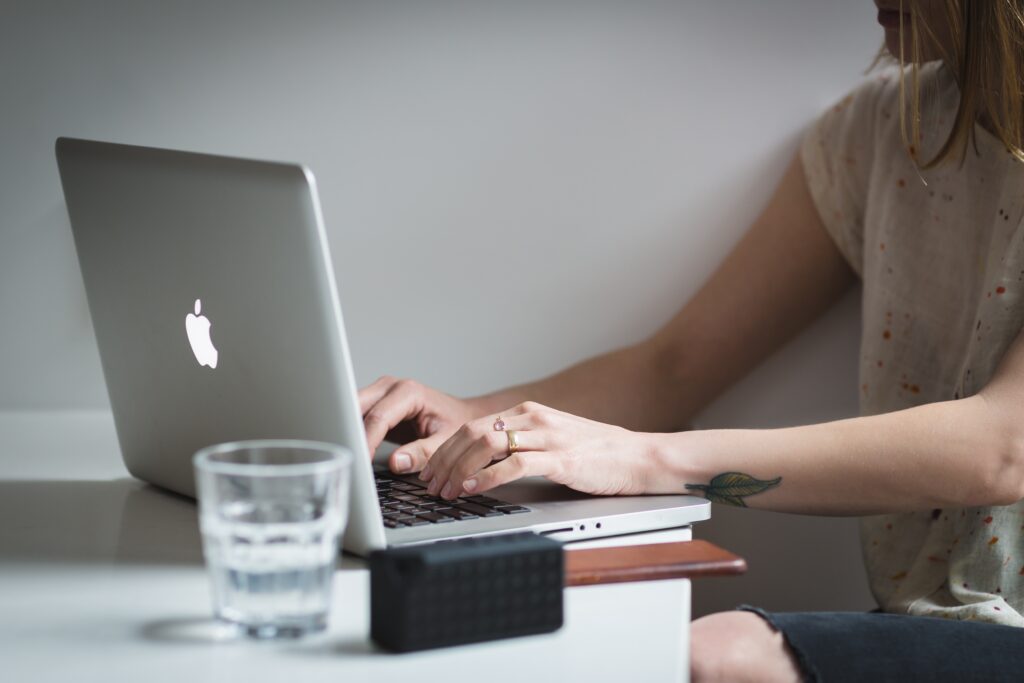I’m an ambitious, Type A, alpha Virgo. But what many of my colleagues don’t know is that I have clinical depression and an anxiety disorder. It’s easier to hide in an office setting. You’re busy. You share a workspace with others. You’re face-to-face in meetings. But at home, you can’t hide it. At home, it’s everywhere. And we’re all about to spend a lot more time at home.
Isolation and confinement don’t bode well with mental health. And yet, for the past three years, I’ve managed my own business from home. Granted, I don’t do it every day. I should mention that I’m a travel journalist and social media host. Before COVID-19, I spent half my time on the road and half at home. But now, with travel restrictions and social distancing in place, I’m at home 24/7. And it’s overwhelming. At times, I feel totally trapped in my depression and anxiety in a way I don’t think I ever would at the office. And I know I’m not alone in feeling this way. Depression manifests differently in each person, but, if you’re overwhelmed too, here are some general practices I’ve found to help me stay inspired and focused while working from home.

Create a Workspace
In theory, working from home sounds awesome. No commute. PJs all day. Streaming your favorite sitcom on TV. But I’ve found that I still need structure. I keep the TV turned off during the day when I’m working. I mute social media and group text threads. And I create a dedicated workspace at the kitchen table with my planner, printer and computer. This helps me compartmentalize in my space and it also helps me not associate every part of my home as work. I used to climb in bed and work on my laptop all cozy under the covers, but I started to associate my bedroom as the office and I found I couldn’t “turn off” my brain when I tried to go to sleep. I’d close my eyes and it felt like a news ticker just scrolling through my to-do list and deadlines. By working in a different area, I keep some sort of work-life balance even under the same roof. And now I’ve found I’m able to relax more before bedtime and I’m able to fall asleep.
No PJs While Working
I also stopped wearing pajamas all day. I’m in a business suit, but I’m definitely in some sort of athleisure, but changing out of PJs into something else gives me purpose for the day and feels like I’m segueing into something else. I guess Mr. Rogers was on to something. This helps me stick to a morning routine, even if I’m not doing my hair or putting on a full face of makeup. Because letting go of hygiene is one of the tell-tale signs of clinical depression. Plus, staying on the same schedule helps me take my medication at the same time.
Practice Self Care
One of the most common misconceptions about depression is that you’re constantly sad. Sometimes it’s like that. Sometimes, I feel completely void of any emotion. But, for me, it’s more like a wave of panic that’s followed by physically feeling heavy that’s followed by feeling emotionally overwhelmed that’s followed by feeling all-around hopeless. It’s a cycle that I work on in therapy, treat with medication and combat with physical exercise. But I’ve found that stress really fuels this cycle. Nothing is more powerful in treating depression than the combination of medication and therapy, but in addition to those two things, I’ve added a couple of wellness routines into my day to help de-stress.
Get a Happy Light
The first thing I do in the morning—even before coffee—is turn on my therapy light. I live in the Pacific Northwest where Seasonal Affective Disorder is very common and little-to-no sunlight is common in the rainy season. But, now, working from home, I definitely won’t get enough sunlight. According to the National Institute of Mental Health, all you need is 20-60 minutes in front of a therapy light with more than 10,000 lux. This light therapy can boost your mood and help you feel less tired. And that helps me feel more motivated to work.
Use Essential Oils
I’m a big fan of essential oils. Aromatherapy has been proven to reduce stress and calm the central nervous system and you don’t need a full spa set up at home to get these benefits. I have a tiny essential oil diffuser that plugs into my laptop with a USB drive. I also use Herban Essentials towelettes. The orange scent is great for brainstorming and crafting pitches to clients because citrus has been proven to brighten your mood and increase creativity.
Get a Squishy
If your depression or anxiety manifests in a body-focused repetitive behavior, those actions can increase dramatically when you’re at home and not around others. I’ve tried fidget spinners and other tactile tools for stress, but I’ve found that squishies help deter the behavior for me. This rainbow stress ball from Ban.do is on trend, looks cute on my desk and helps with dumb emails from Stacey. Because everyone’s got a Stacey.
Exercise
But it’s not just about squeezing foam. Physical exercise is crucial to treating my depression. It boosts my mood with endorphins, helps me sleep better at night and gives me an outlet to de-stress. If the stress starts to build up at home, walk away for five minutes. Take a walk around the block. Roll out the yoga mat. Do some stretches with a foam roller. This tiny break will help you re-center and manage stress.

Reach Out
These products and tips help, but the most help comes from talking to your doctor or a licensed therapist. While we all hunker down and try to flatten the curve, if you start to feel hopeless or have thoughts of suicide, know that you’re not alone. Organizations such as the National Suicide Prevention Lifeline have call centers open despite business closures. It’s free, confidential and someone is always there 24/7. Call 1-800-273-TALK or text “TALK” to 741741.
More from Better:
Why Aren’t Boomers Taking COVID-19 Seriously? A Concerned Millennial Reflects
5 Things to Keep You Sane
6 of the Best Apps to Help You Stay in Touch During the Coronavirus Pandemic
 Deanne Revel is a travel journalist and host in Seattle, WA. She is passionate about LGBTQ rights, mental health and a proud supporter of The Trevor Project. When not on assignment, you can find her exploring National Parks or theme parks with her wife. Follow her adventures on Instagram @revelandroam.
Deanne Revel is a travel journalist and host in Seattle, WA. She is passionate about LGBTQ rights, mental health and a proud supporter of The Trevor Project. When not on assignment, you can find her exploring National Parks or theme parks with her wife. Follow her adventures on Instagram @revelandroam.

